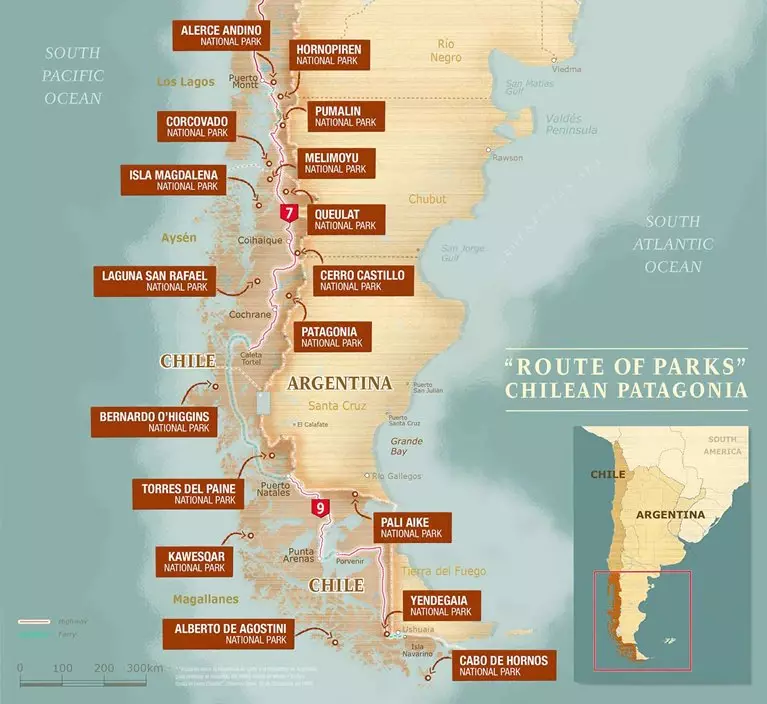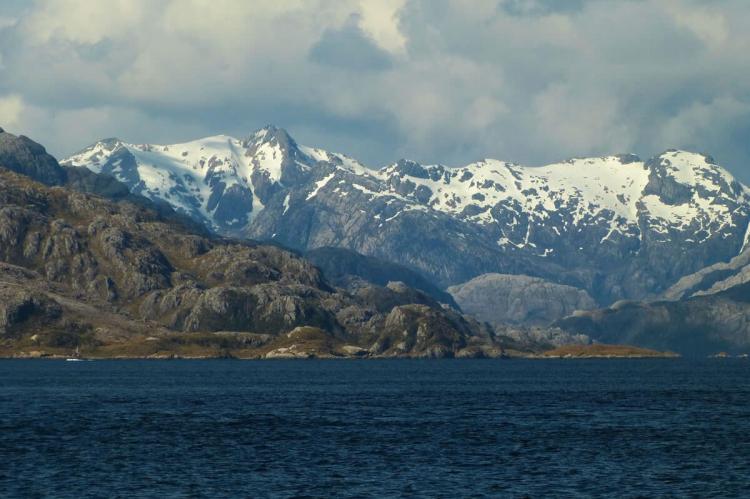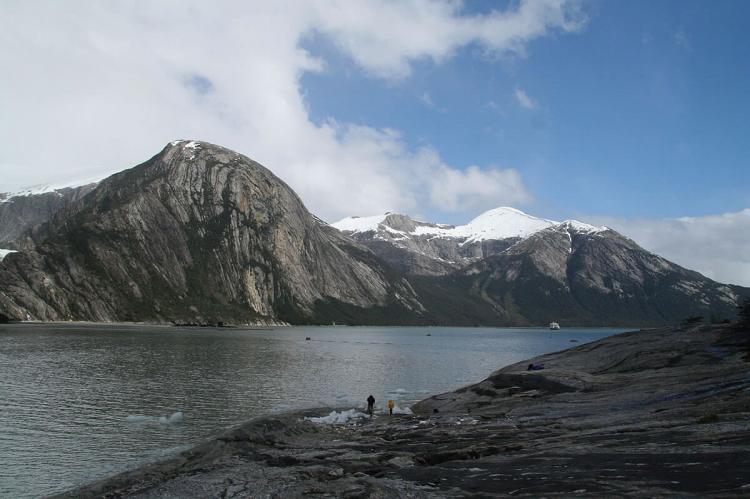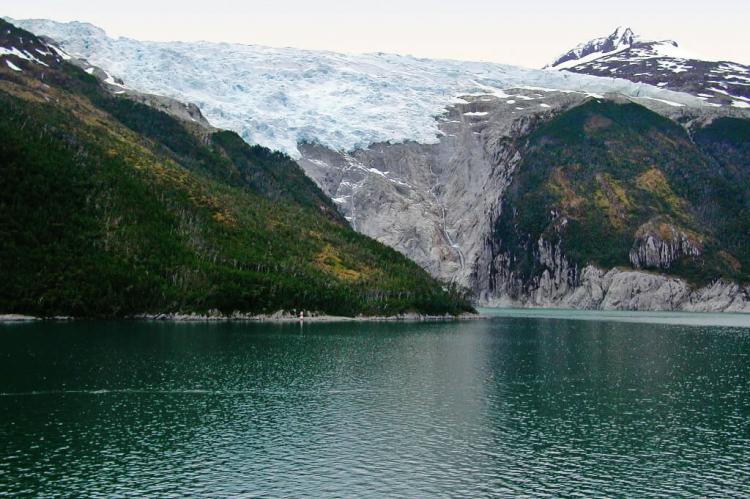Alberto de Agostini National Park: Where the Andes Meet the Sea
Alberto de Agostini National Park lies deep within the heart of Chilean Patagonia, where the Cordillera Darwin's peaks converge with the Pacific Ocean's waters and the Beagle Channel. This protected area is a sanctuary for some of the region's most remarkable flora and fauna.
A Journey to the End of the Andes: Exploring Alberto de Agostini National Park
Deep within the heart of Chilean Patagonia, where the towering peaks of the Cordillera Darwin converge with the relentless waters of the Pacific Ocean and the Beagle Channel, lies Alberto de Agostini National Park – a vast expanse of untamed wilderness that stands as a testament to the raw power of nature. This protected area, spanning an incredible 1,460,000 hectares (3,608,000 acres), is not only a sanctuary for some of the region's most remarkable flora and fauna but also holds a profound geological significance: it marks the final point where the mighty Andes Mountains, the longest continental mountain chain on Earth, plunge into the sea.
A Realm of Glaciers and Fjords
Sculpted by Ice, Carved by Time
The landscapes of Alberto de Agostini National Park have been sculpted by the very forces that have shaped the planet itself – the inexorable march of glaciers and the relentless erosion of wind and water. Here, the park's centerpiece, the Cordillera Darwin, rises majestically, its slopes dropping precipitously to the sea, creating a rugged and awe-inspiring terrain.
At the heart of this mountain range stand the towering peaks of Monte Darwin and Monte Sarmiento, sentinels that have witnessed the ebb and flow of glaciers over millennia. Indeed, much of the park's landscape bears the indelible imprint of these frozen rivers, with the Marinelli Glacier as a striking example. As of 2008, this massive glacier was in a state of retreat, a stark reminder of the ever-changing nature of our planet.
One of the most stunning features of Alberto de Agostini National Park is the Seno Pía, an embayment of the Beagle Channel that winds its way through the glacially carved fjords, offering breathtaking vistas at every turn. Here, the "Avenue of the Glaciers" or "Glacier Alley" – a figurative description of the northwest arm of the Beagle Channel – provides visitors with an unparalleled opportunity to witness the majesty of these frozen titans up close.
The "Avenue of the Glaciers"
A Procession of Ice and Stone
Along the north shore of the "Avenue of the Glaciers," a procession of glaciers named after European countries – España, Romanche, Alemania (also known as Roncagli), Italia, Francia, and Holanda – flow from the Darwin Mountains into the sea, their icy tongues carving their way through the rugged terrain. This spectacle of nature's raw power is a sight to behold, a testament to the enduring beauty and fragility of our planet's most remote and untamed regions.
A Tapestry of Life
Biodiversity in a Subpolar Paradise
Alberto de Agostini National Park is not merely a geological wonder but also a sanctuary for a rich tapestry of life that has adapted to thrive in this subpolar paradise. The park is part of the Magellanic subpolar forests ecoregion, which began to take root around 10,000 years ago as the glaciers that once blanketed the area started their retreat.
Today, this pristine coastal ecosystem is home to a diverse array of tree species, including the coihue (nothofagus betuloides) and Canelo (drimys winteri), which form the backbone of the park's lush evergreen and deciduous forests. These woodlands, in turn, provide vital habitats for a remarkable array of wildlife, from the elusive Culpeo (Andean fox) and the South American gray fox to the playful marine otter (locally known as the chungungo) and the majestic southern elephant seals.
The skies above Alberto de Agostini National Park are no less vibrant, with seabirds like the southern royal albatross, the Magellanic woodpecker, and the white-crested elaenia gracing the air with their presence. The waters surrounding the park are equally rich in marine life, with Chilean dolphins, Burmeister's porpoises, Peale's dolphins, and even the mighty humpback whale calling these pristine waters home.
A Mosaic of Ecosystems
From Tundra to Fjords, A Tapestry of Life
The ecosystems of Alberto de Agostini National Park are as diverse as they are interconnected, forming a mosaic of habitats that support a remarkable array of life. The terrestrial realm is a tapestry of natural wonders, from the evergreen broadleaf forests and deciduous woodlands to the alpine habitats with cushion plants and lichen formations.
The park's tundra ecosystems, ranging from Juncaceae wetlands to Sphagnum peat bogs, provide a glimpse into the resilience of life in even the harshest of environments. At the same time, the glaciers and snowdrifts stand as sentinels of the region's glacial past.
Nestled within this terrestrial realm is a complex network of freshwater ecosystems fed by the melting glaciers and the countless streams and rivers that wind their way through the park. These aquatic habitats, in turn, are intricately linked to the marine environments that surround the park – a vast network of fjords, channels, estuaries, and bays where intertidal systems and vast meadows of brown seaweed (Macrocystis pyrifera) flourish.
A Biodiversity Hotspot
Treasures of the Subantarctic Ecoregion
Recent analysis has revealed that the subantarctic ecoregion of Magellanic Chile, which encompasses Alberto de Agostini National Park, is a genuine hotspot of biodiversity. It boasts the most incredible diversity of non-vascular floral species in Chile and is a haven for many invertebrates and marine mammals.
The waters surrounding the park are home to cetaceans like the Peale's dolphin and the black dolphin, with occasional visits from the majestic killer whales and the Antarctic minke whales. The presence of penguins, particularly the Magellanic penguin and the rockhopper penguin, adds to the region's allure and reminds us of the delicate balance between terrestrial and marine ecosystems.
Conservation and Sustainable Tourism
Preserving Patagonia's Final Frontier
While Alberto de Agostini National Park remains largely untouched by human development, efforts are underway to preserve this pristine wilderness for future generations. As part of Chile's ambitious "Route of Parks" initiative, which spans 17 national parks and protects over 11.8 million hectares (28 million acres) of Patagonian wilderness, Alberto de Agostini National Park is a hope for the region's future.
Sustainable tourism practices are being implemented to strike a delicate balance between allowing visitors to experience the park's natural wonders and minimizing the impact on its fragile ecosystems. Educational programs and interpretive trails aim to foster a deeper appreciation for the park's unique biodiversity and geological significance, empowering visitors to become stewards of this remarkable natural heritage.
Conclusion
Alberto de Agostini National Park is a realm where the forces of nature converge in a symphony of ice, stone, and life. From the towering peaks of the Cordillera Darwin to the glacially carved fjords and the mosaic of terrestrial and marine ecosystems, this park is a testament to the raw power and fragility of our planet's most remote and untamed regions.
As we continue to explore and appreciate Alberto de Agostini's wonders, we are reminded of our role as custodians of this natural treasure. By embracing sustainable tourism practices, supporting conservation initiatives, and fostering a deep appreciation for the delicate balance within these ecosystems, we can ensure that this final frontier of the Andes remains a beacon of hope for preserving Patagonia's unique and irreplaceable natural heritage.

Chile's Route of Parks map - Thompson Conservation.


![Italia Glacier, Beagle Channel, Chile by RAYANDBEE [CC BY (https://creativecommons.org/licenses/by/2.0)] Italia Glacier, Beagle Channel, Chile](/sites/default/files/styles/large/public/italia_glacier_beagle_channel_opt%20%281%29.jpg?itok=5pDrYSmv)
![View of Isla Gordan, Beagle Channel by lluis Cabarrocas Ribas [CC BY (https://creativecommons.org/licenses/by/2.0)] View of Isla Gordan, Beagle Channel](/sites/default/files/styles/large/public/isla_gordon_beagle_channel_opt%20%281%29.jpg?itok=fyfr4Q8l)
